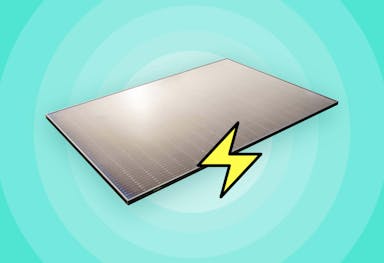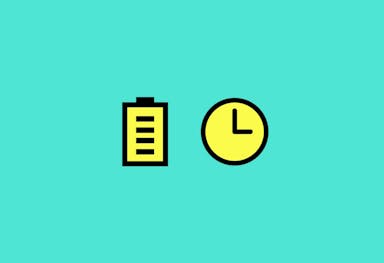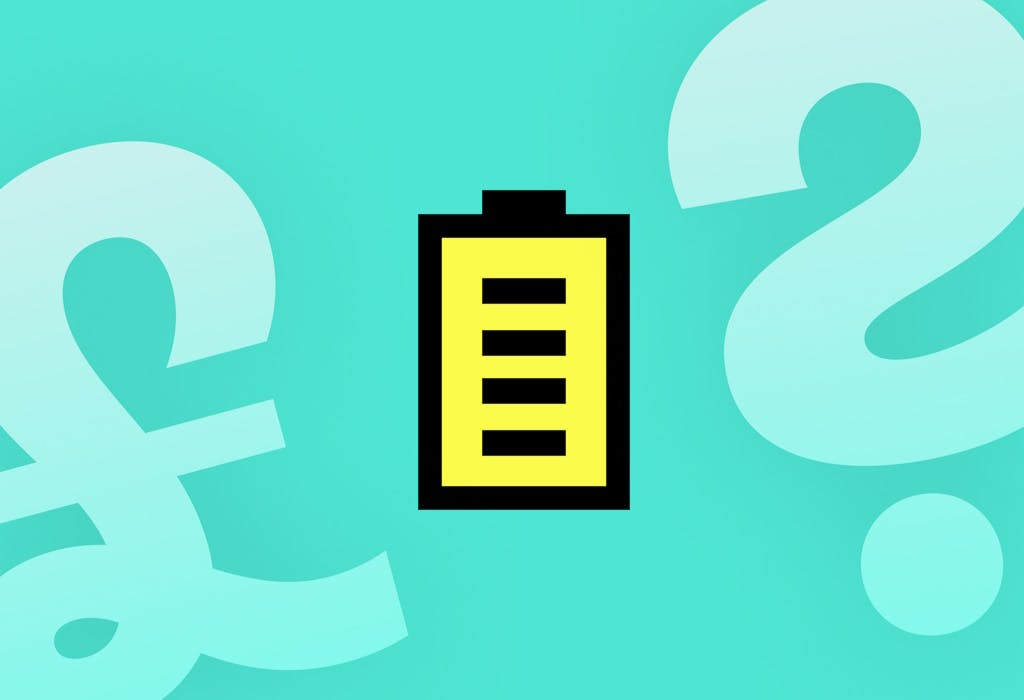- Solar advice hub
- Batteries
- Solar battery storage: is it worth it?
Solar battery storage: is it worth it?
Here's how solar battery storage works, how to pick the best type for your home, how much it can save you, and whether it's worth it.


Why you can trust our content
We know that the solar industry is full of misinformation, but we only use reliable sources, including:
- Our experienced solar experts, installers and system designers
- Our own database of solar & battery system designs
- Authoritative bodies like MCS and the UK government



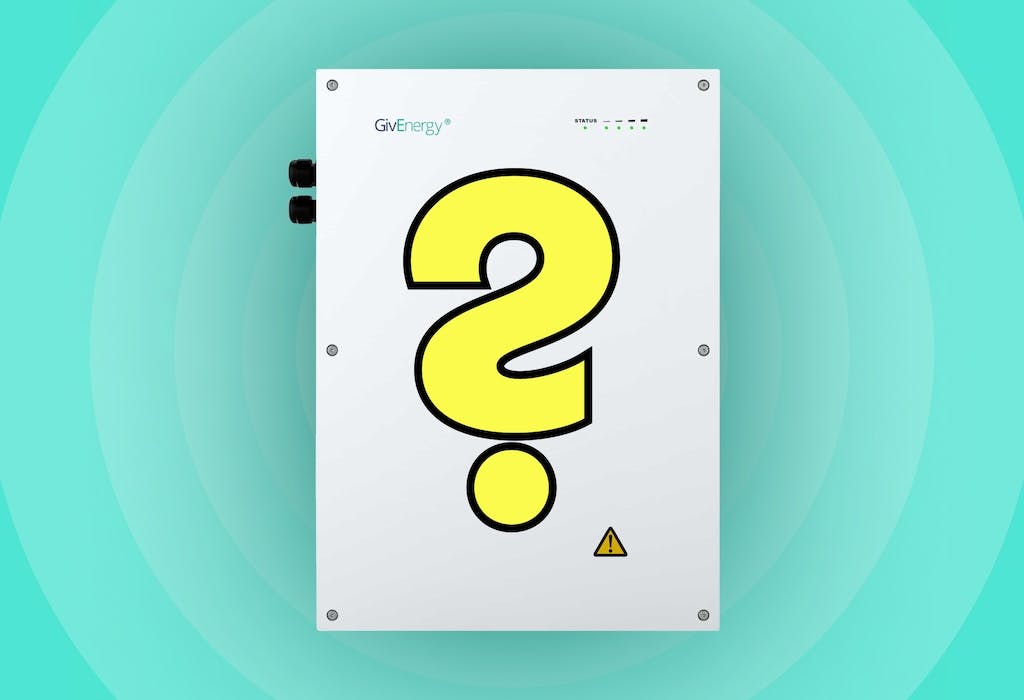
Calculate savings
What kind of home do you live in?
Calculate savings
What kind of home do you live in?
Solar batteries: at a glance
Solar battery storage is the ideal addition to a solar panel system.
It can hugely increase your savings from the electricity your panels generate, allow you to profit from buying and selling grid electricity, protect you from energy price rises, and shrink your carbon footprint.
In this guide, we’ll run through everything you should know about solar battery storage, including how it works, how to pick the best type for your home, and how much you can save – and earn – with it.
If you would like to see the savings you could get from a solar & battery system, click the button below. Just answer a few quick questions, and we’ll provide an estimate.
What is a solar battery?
A solar battery is a storage device designed to hold onto the excess energy your solar panels generate throughout the day.
You can use this extra energy at times when the sun isn’t shining or sell it to the grid through a solar export tariff.
Adding a battery to your system helps you to save even more money, both by enabling you to use a larger proportion of the electricity your panels produce, and by allowing you to take full advantage of the best export tariffs.
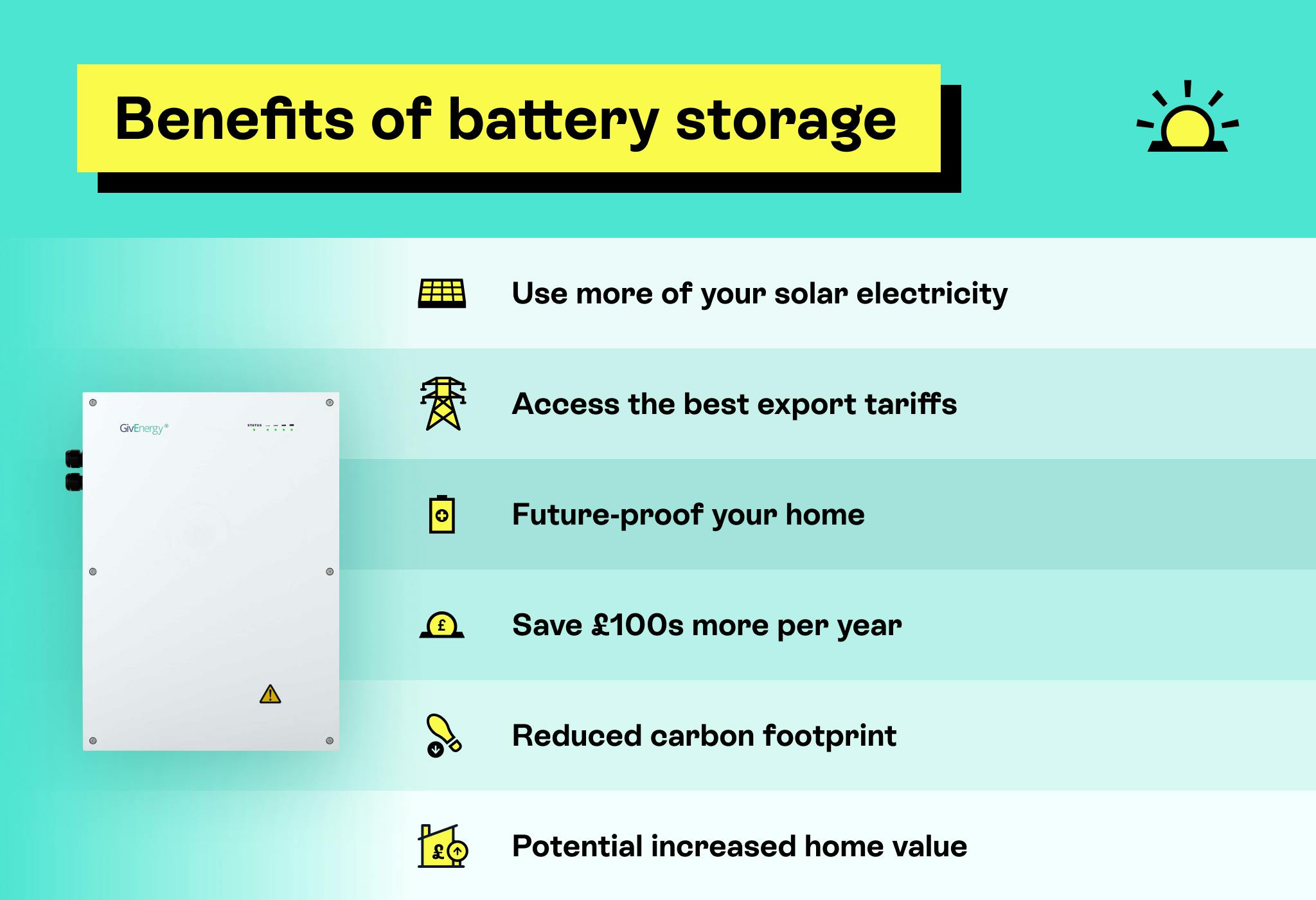
How does a solar battery work?
Your solar panels will generate electricity every day, which your inverter then converts from direct current (DC) electricity to alternating current (AC) electricity.
This electricity will then be fed into your home so you can use it instantly, or go to your battery, where it’ll be stored until you need it.
If your panels are producing more electricity than you’re using at home, and your battery is full, your excess solar electricity will be sent to the grid – for a profit, if you’re signed up to an export tariff.
Should you get a solar battery?
You should definitely get a solar battery if you get solar panels installed at home.
It's not cheap if you pay upfront – a solar battery costs thousands of pounds, usually – but the benefits outweigh the additional expense.
Having a battery enables you to increase the amount of solar-generated electricity you use at home, which is known as self-consumption.
You can also gain access to the best export tariffs and time-of-use import tariffs, and join grid flexibility services like virtual power plants (much more on all of this below).
Additional savings with a battery
| Location | Annual consumption (kWh) | System size (kWp) | Battery? | Break-even point | Lifetime savings |
|---|---|---|---|---|---|
| Bristol | 3,400 | 4.5 | 5.8kWh | 6 years | £38,360 |
| Bristol | 3,400 | 4.5 | No battery | 6.5 years | £21,842 |
To demonstrate the difference a battery makes, we've designed a 4.5 kilowatt-peak (kWp) system for a home in Bristol that uses 3,400 kilowatt-hours (kWh) of electricity per year.
In one scenario, this set of 10 south-facing panels comes with a 5.8kWh battery, and in the other scenario, it doesn't.
Buying a battery means the household will pay more upfront, but this investment pays off, as it breaks even in six years. This compares to a 6.5-year payback period if the home chooses not to get a battery.
The home with a battery is also better off in the long run. Over 25 years, its net savings are £38,360, while the household without a battery earns £21,842.
That's a difference of more than £16,500 – so even if you account for the cost of replacing a battery after about 12 years, the net savings are still much higher for the system with a battery.
This is because the home with a battery can benefit from a much more profitable tariff setup, including a time-of-use import tariff and one of the best export tariffs around – and that makes all the difference.
Solar savings after 25 years, battery vs no battery
How can a solar battery save you money?
A solar battery can save you money in a few different ways.
Firstly, it enables you to use more of the electricity your solar panels produce, which reduces how much you need to buy from the grid.
A battery also allows you to take full advantage of time-of-use tariffs, the best export tariffs, and virtual power plants.
This means you can import cheap electricity overnight and use it to power your home for the rest of the day (more on this below), then sell most of your solar-generated electricity to maximise your earnings.
It’s tricky to benefit fully from all four of these approaches, as they’re not all complementary – but if you focus on a couple, you can maximise your returns.
Here are the four key ways you can benefit from having a solar battery:
- Increasing your self-consumption
- Combining with time-of-use tariffs
- Combining with export tariffs
- Virtual power plants
Verified expertThe concept of ‘self-consumption’ is a very important one in solar, as it refers to the quantity of electricity generated by your panels that you’re actually using at home, as opposed to sending to the grid. Adding a battery to a solar panel system is a bit of a no-brainer, as it will dramatically increase your self-consumption and give you access to some of the best solar export tariffs.
Alfie Ireland
Head of Operations & Technical at Sunsave
Alfie has worked in green tech for over a decade. During his four years at OVO, he helped develop the world’s largest domestic vehicle-to-grid trial.
1. Increasing your self-consumption
Having a battery allows you to store some of the electricity your solar panels generate, so you can put it towards powering your home once the sun goes down.
This feature takes centre stage in summer, when your system will often produce more energy than your household needs at a given time.
In this way, a battery will increase your self-consumption – that is, the percentage of solar-generated electricity you use at home, rather than selling it to the grid.
The higher your self-consumption rate, the less electricity you’ll need to buy from the grid, and – traditionally, at least – the more your solar panels will save you on your energy bills.
However, the rise of time-of-use tariffs has substantially changed this calculation, to the extent that using your battery to raise your self-consumption currently seems outdated and limiting (more on this below).
2. Combining with time-of-use tariffs
Time-of-use tariffs are import tariffs that come with off-peak periods.
This means the price of buying electricity from the grid changes, depending on what time you import it.
The cheapest time is usually during the night, from around 12am to 5am. This is the case with tariffs like British Gas Electric Driver and Good Energy EV Charge.
Time-of-use tariffs’ recent rise to popularity has made owning a solar & battery system even more profitable, and drastically changed the best way for many solar homes to operate.
You can now fill your battery with off-peak electricity, and use this cheap supply to power your household for the rest of the day.
This will allow you to export most of your solar electricity, which can substantially boost your earnings.
To make this work, you’ll need your export rate to be higher than your off-peak import rate – but that’s relatively easy to achieve.
3. Combining with export tariffs
You can sign up to an export tariff that takes control of your battery to maximise your earnings.
Tariffs like Intelligent Octopus Flux will automatically import electricity at off-peak times, then sell this electricity back to the grid during its 4-7pm peak period – making you a profit without you having to lift a finger.
This technique, known as ‘energy arbitrage’, is only available to solar homes that also have a battery.
OVO’s Battery Boost add-on is similar, in that it imports electricity to your battery when it’s cheapest to do so, and charges you a discounted rate of 10p per kilowatt-hour (kWh).
It doesn’t automatically export this low-cost electricity to the grid, leaving the decision up to you. You can either sell it through one of OVO’s export tariffs, or use it in your home to cut down the amount of electricity you need to import.
Signing up to one of these tariffs can be more profitable than using a time-of-use tariff; it all depends on how much electricity you use and the size of your system.
A good installer will be able to advise you on the best approach for your home.
4. Virtual power plants
A virtual power plant is a group of small-scale renewable generators, storage batteries, and/or smart devices that benefits financially from serving the grid’s needs.
Homes and businesses with solar & battery systems or electric vehicle chargers, for example, can come together to produce, store, use, and distribute energy when the grid requires it – and get paid for doing so.
This makes it like a traditional power plant, except that it can include hundreds or even thousands of participants, and only forms a single entity in a digital sense. Physically speaking, the parties involved can be tens or hundreds of miles away from each other.
Solar homes can only join a virtual power plant if they add a battery, since it’s otherwise impossible to alter when you use or distribute your solar electricity.
You can also take part in the Demand Flexibility Service, a National Grid Electricity System Operator initiative that pays households to consume less electricity during peak periods.
You don’t need a battery to join this scheme, but relying entirely on battery power at peak times is the best way to maximise your earnings.
To learn more, read our guide to virtual power plants.
How much power can a solar battery provide each day?
A solar battery can provide as much electricity per day as it can store and safely discharge.
Whether it can power your whole home for a day depends on your electricity consumption and the battery’s size.
A 9.5kWh battery, for instance, can provide more than enough electricity for a standard day in the life of an average household.
This is based on the average UK home using 3,400kWh of electricity per year , which equates to 9.3kWh per day – hence why a 9-10kWh battery can provide enough energy on a regular basis.
Daily electricity usage changes with the seasons though, so on many days you’ll consume more than 9kWh, while on many other days you’ll use a lot less.
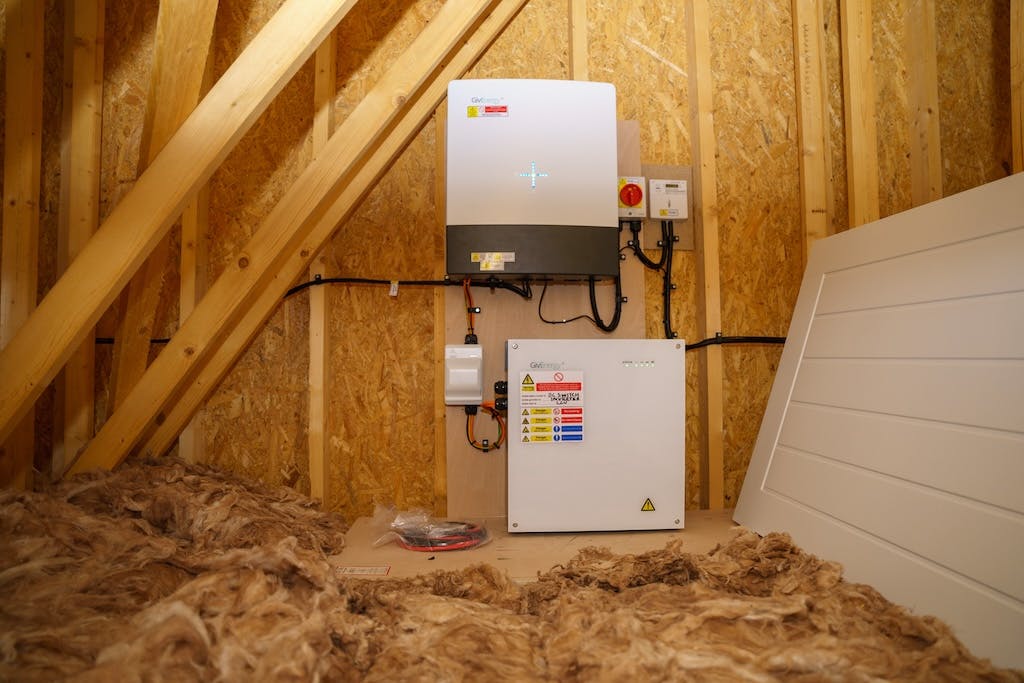
How much can you save with a solar & battery system?
On average, you could save 86% on your electricity bills with a solar & battery system.
This figure is based on a sample of over 150 systems installed by Sunsave across England and Wales in 2024. The average system is 6.1kWp, with 54% of solar electricity used at home and 46% exported to the grid.
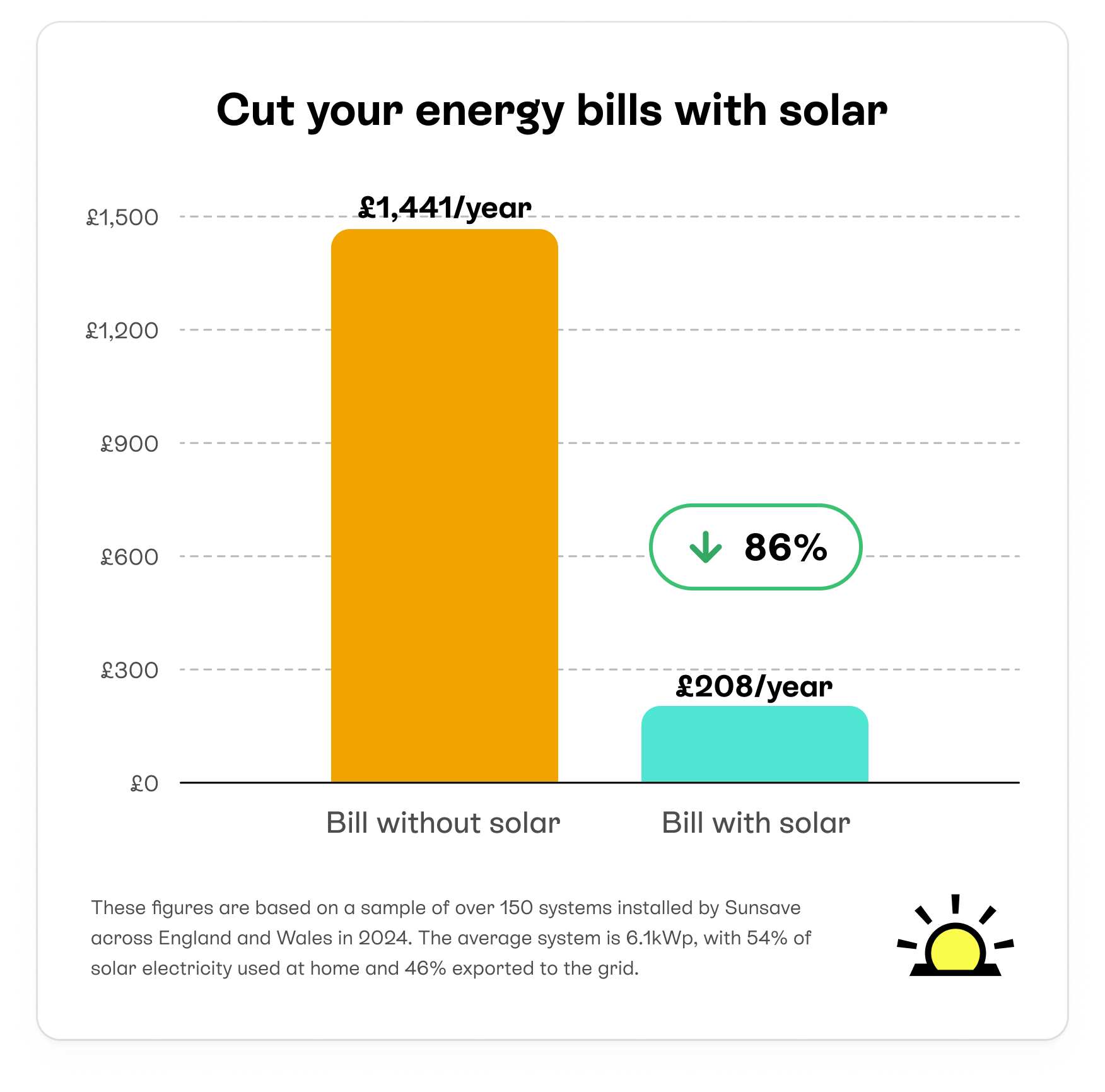
Naturally, the actual amount you’ll save on your bills will vary based on multiple factors.
These include the size of your solar panel system and battery, how much electricity you use and when, your location, your roof’s angle and direction, and which tariffs you sign up for.
For a savings estimate tailored to you, click the button below. Just answer a few quick questions, and we’ll provide an estimate.
How much does a solar battery cost?
These prices include the installation and all associated costs – but it does assume that you’re getting the battery as part of a wider solar panel system.
If you get a battery at the same time as your solar panels, you'll already be paying for the labour, so the extra cost of fitting a battery will be about £3,000-7,000, depending on a few factors.
But if you get the battery added onto your system at a later date, it could be more expensive, as you’ll have to pay for the installation costs all over again.
You’ll also pay more because all retrofitted batteries are AC-coupled machines, which usually cost more than their DC-coupled counterparts.
For more information, read our guide to how much solar batteries cost.
How much have solar battery costs fallen?
Solar battery costs have fallen by 97% since 1991, according to Our World In Data.
That means the same lithium-ion battery that now costs you £3,000-7,000 to install at the same time as a solar panel system would’ve set you back around £100,000-£233,000 in 1991.
The price has plummeted as competition has grown, and as technological and operational developments have lowered manufacturing costs and led to the creation of lighter, smaller batteries.
With batteries getting increasingly popular and the need for global electricity storage only rising, this rate of progress shows no signs of slowing down.
In fact, every time the world’s total battery capacity doubles in size, the price per kWh falls by 19%, on average.
Lithium-ion battery costs, 1991-2018
Are there any grants for solar batteries?
There are grants available for solar batteries, but they’re generally targeted at the most deprived households, so the majority of people won’t qualify.
Here’s a bit more information about all the relevant grants and schemes.
How to choose a solar battery
Choosing a solar battery is a complicated process that’s best left to a qualified installer.
However, it helps to have a decent grasp of the following elements, all of which will contribute to the final decision.
1. Battery size
One of the most important parts of choosing the right battery is to select an appropriately sized model for your solar panel system and home.
The size of a solar battery is measured in kWh instead of kW, because they store energy; they don't create it.
The average UK home consumes 3,400kWh of electricity per year, according to government data , and should usually look for a 5-6kWh solar battery.
It’s only once you start using 5,000-6,000kWh per year that a larger battery is necessary, though you should consider getting a larger battery if you’re thinking of increasing your electricity consumption at some point, for example with an EV charger or heat pump.
Taking this step will future-proof your setup, raise your solar self-consumption, and enable you to sell even more electricity to the grid.
To learn more, check out our guide to solar battery sizing.
2. Depth of discharge
The depth of discharge (DoD) is the maximum percentage of a battery’s capacity you can use without risking damaging it.
Since batteries won’t let you discharge them beyond their DoD, you don’t need to worry about this happening while you’re using them – but considering this attribute is a vital part of the buying process.
After all, if you get a 5.2kWh battery with an 80% DoD, that means it has a usable capacity of 4.16kWh – which is 1.04kWh more than the same battery with a 60% DoD.
Thankfully, batteries with a DoD of 100% are becoming increasingly common.
Every battery also needs some electricity so it can operate and power its own Battery Management System, but this requirement isn’t factored into its DoD – which is why you can have batteries with a DoD of 100%.
3. Charge and discharge rates
A battery’s charge and discharge rates track how much electricity it can take in and send elsewhere, per hour.
These rates are measured in kilowatts (kW), rather than kWh like a battery’s storage capacity, and affect how many appliances in your home you can run on your battery alone.
For instance, if your battery’s discharge rate is 3kW, you’ll be able to power your lighting, TV, washing machine, two laptops, and a games console with no issue – but if it’s 5kW, you can also run a tumble dryer at the same time.
Your battery’s charge and discharge rates also have a major impact on your ability to maximise profits from your solar & battery system, if you’re signed up to a tariff like Intelligent Octopus Flux.
For instance, if your battery has a 3kW per hour charge rate and 15kWh capacity, it won’t be able to fully charge up during the three-hour off-peak period, when importing is cheapest.
It’ll reach 9kWh, and then either have to stop, or continue charging with more expensive grid electricity.
If the battery also has a discharge rate of 3kW, there’s no point in it getting any more electricity from the grid outside of the off-peak period, since it won’t be able to discharge more than 9kWh during the peak time anyway.
If you’re looking to increase your system’s discharge rate at any point, adding another battery won’t do it – but buying a second inverter will.
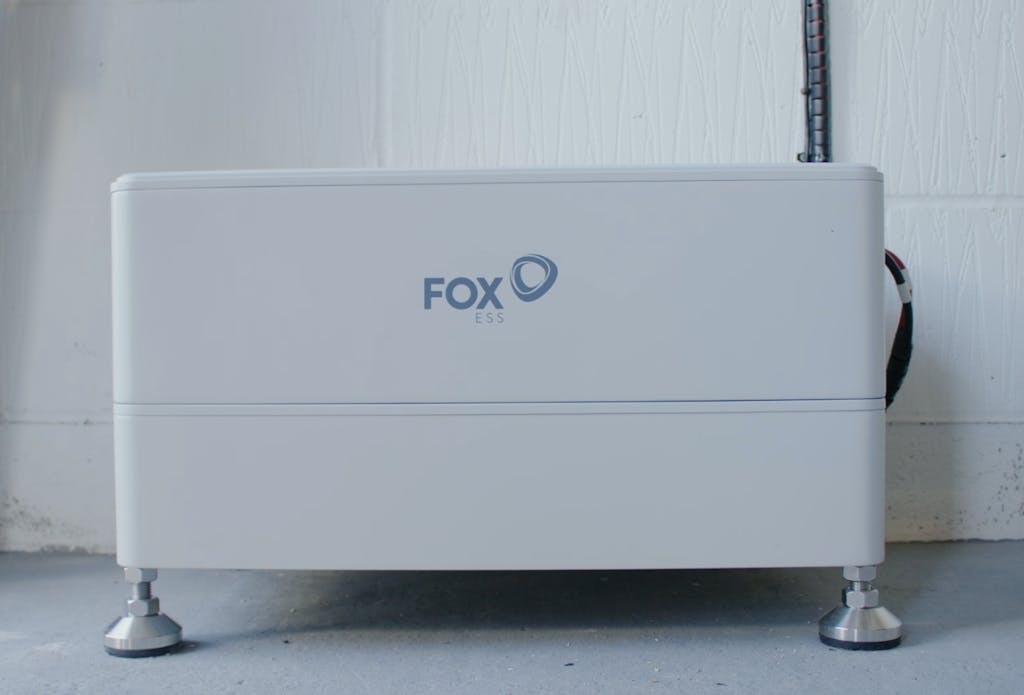
4. Round trip efficiency
Round trip efficiency refers to the percentage of electricity that a battery holds on to throughout a full cycle of charging and discharging.
Obviously the ideal situation would be all your electricity sticking around for the entire process, but slight losses are inevitable.
However, some batteries are better than others at preserving electricity.
You should expect modern lithium-ion batteries to have a round trip efficiency of at least 90%, with the best models going as high as 97%.
The higher your battery's round trip efficiency, the more electricity you'll be able to use, sell, and generally profit from.
5. AC-coupled vs DC-coupled
Your battery can be connected to the inverter on the AC or DC side, meaning it either sits between your inverter and your house (AC side), or between your inverter and your panels (DC side).
AC-coupled batteries are more flexible, as they’ll work with any inverter or microinverter, and coexist more easily with EV chargers and solar diverters.
You’ll need DNO approval for an AC-coupled battery, as it has the ability to ignore the maximum limit of your inverter when it’s sending electricity to the grid.
DC-coupled systems are more efficient than AC-coupled versions, since they only have to carry out one conversion, and don’t require DNO approval, since their exports are limited by the inverter.
They’re also cheaper than AC-coupled batteries, as they only require one inverter, though this does need to be a hybrid inverter – that is, a device that has the capabilities of both a solar inverter and a battery inverter.
If you get a solar battery installed at the same time as your solar panels, it’ll likely be a DC-coupled model, whereas all retrofitted batteries are AC-coupled.
They’re both able to charge from and discharge to the grid, so either way, you may be able to access the top solar export tariffs.
Verified expertWhen having solar panels installed, it makes more sense to get a DC-coupled battery, as you can integrate it with the inverter. This means there are few power conversions, which minimises electricity loss. An AC-coupled battery is preferable for battery-only installations, or if you’re retrofitting one to an existing solar panel system.
Tom Brehme
Technical Manager at Sunsave
Tom has worked in residential solar installation for more than a decade, and is a fully qualified electrician.
6. Emergency Power Supply (EPS)
A solar & battery system will usually disconnect from the grid in the event of a power cut, to ensure there’s no risk of electricity lines being live while engineers are working on them.
But if your installer takes certain steps during the installation, they can enable your battery to supply your home with electricity even when the grid goes down, as long as it has Emergency Power Supply (EPS) functionality.
However, EPS isn't worth it in the vast majority of cases in the UK, with the average household experiencing just 0.4 outages per year, and losing electricity for just 35 minutes in total.
If you do want to go ahead with EPS, you’ll need to choose which level you want when the lights go off in your area. The higher the level, the more of your home you can power.
- Level 1: Just a power socket
- Level 2: Essential circuits (e.g. your lights and fridge)
- Level 3: Your whole home, but you’ll have to turn it on manually
- Level 4: Your whole home, and it turns on automatically
The engineer will then install an automatic or manual relay that can physically disconnect your home from the grid in the event of a power cut, plus another consumer unit (fuse box).
Depending on which level you choose, they may also need to set up a new earthing network, which is a time-consuming, expensive process that involves driving one or more earth rods into the ground on your property.
After it’s all set up, you’ll have to pick the minimum percentage of your battery you want to keep filled at all times, in case of a power cut.
If you urgently require electricity at all times, for instance to keep medical equipment running, this level may need to be fairly high.
To learn more, check out our guide to EPS for solar.
Verified expertAs well as increasing your energy bill savings, some storage batteries also come with an Emergency Power Supply (EPS) feature, although you will have to pay extra to have this capability installed. However, most areas in the UK don’t have power cuts regularly enough to make EPS worth the additional cost.
Alfie Ireland
Head of Operations & Technical at Sunsave
Alfie has worked in green tech for over a decade. During his four years at OVO, he helped develop the world’s largest domestic vehicle-to-grid trial.
7. Lifespan & warranty
Solar batteries typically last 10-12 years at peak performance, but after this point they will start to decline considerably and need replacing.
Companies typically reflect this in their warranties – as shown by AlphaESS’s 10-year warranty on its SMILE-G3-S5 battery, or GivEnergy’s 12-year warranty on the Giv-Bat 5.2.
Some warranties also include the number of cycles a battery performs – that is, the amount of times it charges up and discharges. A cycle doesn’t have to be a full charge and a full discharge – even dropping down to 50% and filling up to 80% can count as a cycle.
The best batteries on the market are typically able to run through 6,000 total cycles over their lifespan, which is why Enphase’s IQ Battery 5P warranty is 15 years or 6,000 cycles long – whichever comes first.
There’s also an increasing number of companies offering battery warranties with unlimited cycles – for instance, GivEnergy’s bestselling Giv-Bat 9.5 comes with a 12-year warranty that has no cycle limit.
For more information, read our guide to how long solar batteries last.
8. Battery chemistry
Batteries are classified according to the materials they contain, which all produce slightly different chemical reactions that can affect a battery’s efficiency – that is, the percentage of energy a battery retains during the charging-discharging cycle and in storage.
The goal is to develop a battery that’s as close to 100% efficient as possible, and with lithium-ion batteries the industry has reached an impressive 96%.
Even within the field of lithium-ion batteries though, there are several different competing combinations of materials.
The most popular two are NMC – which uses nickel, manganese, and cobalt as the cathode material – and LFP, which uses lithium iron phosphate.
NMC batteries can charge faster than LFP models, but they’re also more expensive – because nickel and cobalt are becoming increasingly complicated to mine – and more prone to thermal runaway, which is a dangerous cycle of overheating.
On the other hand, LFP batteries are closing the charging speed gap, have a longer lifespan than NMC batteries, and are less likely to catch fire.
Both are excellent varieties of battery, and will last at least 10 years if used properly.
Do solar batteries require any maintenance?
Solar batteries generally need little to no maintenance, assuming you follow the manufacturer’s guidelines.
This can involve running a recommended number of daily cycles and keeping the system in certain conditions.
If you want to make sure you’re taking proper care of your battery and possibly extending its useful lifespan, you could consider booking an engineer once per year to assess the system’s health.
With a typical lifespan of 10-12 years though, solar batteries won’t perform properly for nearly as long as the 30-40 years solar panels last, even if they have no maintenance issues along the way.
Fortunately, every Sunsave Plus subscription is protected by the Sunsave Guarantee, which provides you with a free battery upgrade once it drops below 70% of its original capacity.
You’ll also get 20 years of support, including 24/7 monitoring, downtime cover, and a free inverter replacement (if required) – and your system will be insured by Aviva against damage, fire, and theft.
Do solar batteries pose a fire risk?
Solar batteries don't pose any meaningful fire risk.
In the past, batteries would occasionally set on fire, due to a phenomenon called thermal runway.
When a battery is damaged or has a manufacturing fault, its insides can deteriorate and produce heat, which in turn causes more deterioration and heat, in a spiral that can end with the machine catching fire if there's no cooling system in place.
Fortunately, thermal runways are almost completely non-existent these days.
Independent research body The Faraday Institution reported in 2023 that "even with billions of lithium-ion cells in circulation, there are very few safety incidents involving them, which is a testament to how safe they are.
"Rates of catastrophic cell failure and associated battery fires involving lithium-ion cells remain extremely low".
The article, written by experts at Newcastle University and University College London, added that "only one in 40 million cells suffers such a failure."
And batteries are only getting safer; a 2025 parliament research briefing notes that LFP batteries are safer than NMC models, and now make up a larger proportion of the market.
How many UK households have solar batteries?
Around 94% of new solar panel installations in the UK include a battery, according to data from Flexi-Orb and EPVS, which positions the UK as one of the biggest supporters of solar batteries in Europe.
70% of Germany’s solar homes own batteries, while Italy and Austria sit far below on 45% and 30% respectively, according to SolarPower Europe.
This is remarkable, especially considering Italy started offering a ‘superbonus’ in 2020 that rewarded households that went solar with 110% of the cost of their installation in tax credits.
This has since been scrapped, but it still had a large effect on Italy's solar uptake.
How are solar batteries installed?
Solar batteries should be installed by a certified engineer, in a process that typically takes around half a day.
If they’re following the latest guidelines in the Publicly Available Specification (PAS) 63100, they’ll usually either set your battery up outside or in your garage – although any good installer will consult with you about the best location in your home.
They’ll also install an inverter one to two metres away from your battery (if it’s not built-in), which they’ll connect to your battery, your fuse box, and the grid.
Your battery should be placed in a spacious area where air circulates freely, since a cramped space can cause your inverter to overheat and become less effective.
Most batteries sit on the floor, although there are some wall-mounted models which must be placed on a sturdy, load-bearing wall.
For more information, read our step by step guide to solar battery installations.
How big is a solar battery?
Solar batteries vary in size enormously, largely depending on which type you choose.
Lithium-ion batteries tend to be the most compact, as they have the best energy density – that is, how much electricity they can store in relation to their size.
They typically stand around 70cm high, 55cm wide, and 30cm deep.
Sodium-ion and nickel-cadmium batteries are designed in a similar way but have worse energy density ratings, so they’re usually slightly larger than lithium-ion models.
Lead-acid batteries are heavy, squat machines, while flow batteries are the largest of all the household solar batteries.
The newest domestic flow models are about two metres tall and weigh around 200kg – the same as 2.5 average Brits.
There are plenty of variations within the same type of battery, though. Even when you compare lithium-ion batteries with similar capacities, they range in height from 35cm to 1.7m, and from 0.3m² to 1.8m² in total area.
Can you install a battery without solar panels?
If your roof isn't suitable for solar panels, a battery installation can still benefit you, as you can use time-of-use tariffs to save and earn money.
And if you get your installer to take certain steps to create an Emergency Power Supply for you, you can also make sure your home has electricity when power cuts occur – though this is a costly process that’s usually entirely unnecessary in the UK.
The average household goes through 0.4 outages per year, and loses electricity for about 35 minutes overall, according to the latest Ofgem report.
It’s always better to use a battery with solar panels, as you can save hundreds of pounds per year, cut your carbon footprint, and lessen the impact of electricity price rises.
For more information, check out our guide to home battery storage without solar in the UK.
Can you add a solar battery to an existing solar panel system?
You can add a solar battery to an existing solar panel system.
However, it’ll usually cost significantly more than having a battery installed at the same time as your panels, as you’ll have to pay for labour all over again.
It’s therefore worth planning ahead and getting a battery when you first switch to solar.
The cost of adding a battery later on will also likely be higher because all retrofitted batteries are AC-coupled, and these models generally have higher price tags than their DC-coupled equivalents.
This is the same principle you should use when deciding how many solar panels you need. Plan for the future, and you can lower your overall costs – and increase your total savings.
What are the different types of solar battery?
There are five main types of solar battery, with multiple variations within each category.
Some of these batteries are cutting-edge, some are useful in certain situations, and others are simply outdated. Here are the different types:
- Lead-acid batteries
- Lithium-ion batteries
- Sodium-ion batteries
- Flow batteries
- Nickel-cadmium batteries
1. Lithium-ion batteries
Lithium-ion batteries are the best option on the market at the moment.
These machines, which use a lithium-salt electrolyte to carry electrons between the cathode and anode, have the highest average lifespan of any battery, at 10-12 years or 6,000 cycles.
They also have limited maintenance needs – if used properly – as well as a large capacity.
They’re around 96% efficient, charge and discharge more quickly than other types, and are smaller and lighter as well.
We supply Sunsave Plus customers with lithium iron phosphate (LFP) models – the newest, most cutting-edge version of lithium-ion batteries.
2. Sodium-ion batteries
Sodium-ion models are now being rolled out on the market, which could help storage batteries to continue and even propel their rapid growth in global popularity.
After all, sodium is much easier and cheaper to get your hands on than lithium. It’s abundant in nature, as shown by its prominence in a large variety of foods you eat – not least in salt.
That makes it an enticing alternative, as does the fact that it’s already reached a similar level of efficiency and capacity as lithium-ion batteries.
However, as yet, sodium-ion models can only perform around 3,000 cycles in their lifetime, meaning they’ll last less than half as long as a typical lithium-ion machine.
Sodium-ion batteries represent one of the most exciting paths being explored by the industry, as solar batteries evolve to require fewer rare materials – but don’t expect to see them reach the capabilities of lithium-ion models any time soon.
3. Lead-acid batteries
Lead-acid batteries were created in 1859, making them the oldest type of rechargeable battery.
They use lead in the cathode and anode, which are placed in an electrolyte composed of watered-down sulphuric acid.
These batteries are still used all over the world, despite being less reliable, efficient, and long-lasting than lithium-ion batteries, generally.
Lead-acid models usually come to the end of their lifespan after three to seven years, and require regular maintenance to last even that long.
You’ll frequently need to add distilled water to the machine, while ensuring you don’t add too little or too much – as both can damage your battery.
They also typically charge and discharge more slowly than other varieties, which cuts into your ability to maximise your solar profits.
While they're usually cheap and easy to recycle, these batteries also come with a poor energy-per-weight rating, because lead is extremely dense compared to other materials.
4. Flow batteries
Flow batteries use two chemical components dissolved in liquids as the anode and cathode, unlike most other types of batteries (where the anode and cathode are solid).
This machine, which like lead-acid batteries can trace its roots back to the 19th century, typically comes with a large capacity and long lifespan.
However, its low energy density means you’ll need to make space for a large, heavy piece of kit, and its materials – such as vanadium – make it far too expensive for most households.
Since flow batteries work better on a bigger scale, they’re usually more useful for commercial and industrial projects.
5. Nickel-cadmium batteries
Nickel-cadmium solar batteries are banned in the UK – as well as in the European Union – because cadmium is carcinogenic and highly toxic to humans.
No battery is allowed to contain more than 0.002% of cadmium, by weight, which makes creating nickel-cadmium solar batteries impossible.
The electrolyte used in these batteries is a strong alkaline that’s mainly composed of potassium hydroxide, a caustic compound which is also extremely dangerous.
Apart from these risks, nickel-cadmium batteries are decent. They’re capable of reaching high capacities, operating at a high energy density, and charging and discharging quickly.
However, they have a short lifespan that renders them a poor investment, especially as they come at a high price – or would, if they were legal in the UK.
Is a solar battery worth it?
A solar battery is a crucial addition to a solar panel system. It’s the best way to maximise your savings and earnings, protect yourself from price rises, and reduce your carbon emissions.
And if you sign up for Sunsave Plus, you can get a solar & battery system with no upfront cost, have it monitored across its lifespan, and receive a free battery upgrade when needed.
If you’re wondering how much a solar & battery system could save you, just answer a few quick questions below and we’ll provide you with an estimate.
Solar batteries: FAQs
Related articles

Written byJosh Jackman
Josh has written about the rapid rise of home solar for the past six years. His data-driven work has been featured in United Nations and World Health Organisation documents, as well as publications including The Eco Experts, Financial Times, The Independent, The Telegraph, The Times, and The Sun. Josh has also been interviewed as a renewables expert on BBC One’s Rip-Off Britain, ITV1’s Tonight show, and BBC Radio 4 and 5.


